Simple Machines

Machines are tools used to make work easier. Some simple machines include levers, wheels, and pulleys.
Mechanical advantage
Mechanical advantage is an essential term in mechanics. It is a measure of the force amplification achieved by using a tool or mechanical device, or how much easier a machine makes your work by multiplying the force you apply to it.
Levers
A lever has two main parts: the beam and the fulcrum. The beam is the part that we put objects we want to lift on, and the fulcrum is the pivot point.
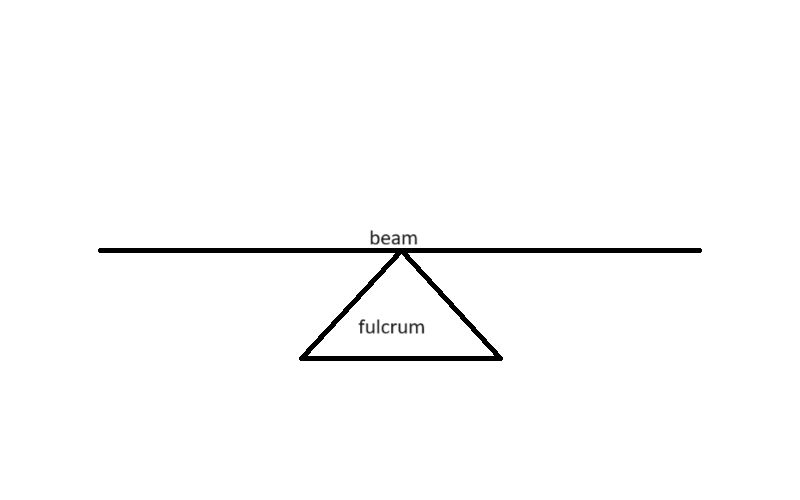
Now let's say that the fulcrum is not in the middle of the lever. Instead, it is moved to the left, like in this diagram:
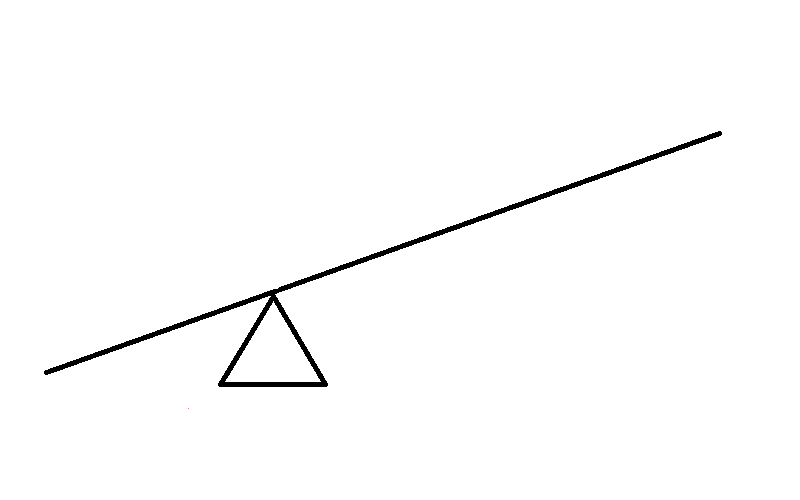
In this setup, pressing on the left (the shorter) side of the lever will take more force, but it will move the right side in less time. The right side is easier to move, but it will take longer for the opposite side to move. Moving the right side of the lever is an example of mechanical advantage.
We can use a formula to calculate how much force it will take to move an object, or how large of an object we can move with a force. This formula is:
Where F is the force, Df is the distance to the fulcrum from where we apply the force, M is the mass of the object we are trying to move, and Dw is the distance between the object and the fulcrum.
Now, with this formula, we can solve this problem:
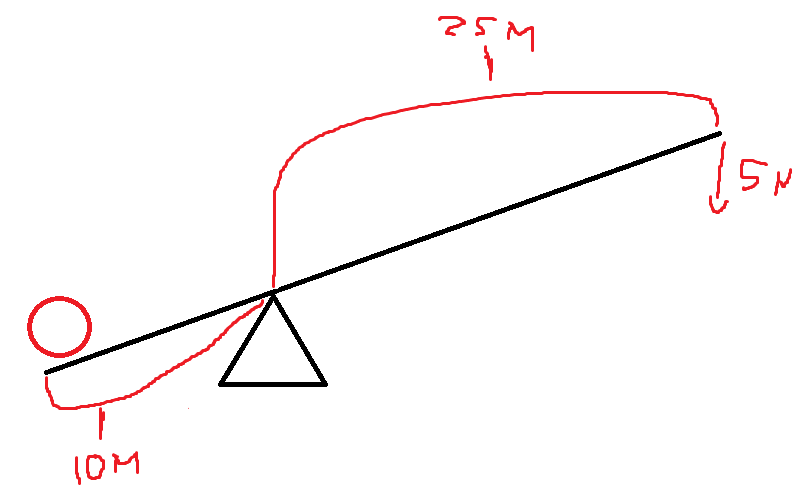
So, F is 5, Df is 25, Dw is 10, and M (the mass) is unknown. If we put these values into the formula, we get:
Which simplifies to:
So the maximum mass we can lift with this lever is 12.5 Newtons.
A lever is used to move large objects easily. Some examples of levers in everyday use are pliers, scissors, bottle openers, wheelbarrows, etc.
Wheels
A wheel and axle is another simple machine. It has two main parts: the wheel(s) and an axle which connects them. Some examples of wheel-and-axle machines include: a water wheel, a bicycle, or a car.
The mechanical advantage is a relation between the radius of the wheel and that of the axle. The larger the wheel, the more mechanical advantage it has because it spins the axle more in one rotation than a smaller wheel.
Additionally, wheels reduce friction with the ground, allowing them to move large objects easily. They also have a distance advantage over levers because they can move objects for an unlimited distance, whereas the levers can only move objects for a small distance.
Pulleys
A pulley is a simple machine that, in its simplest form, reverses the direction of a force. It has two main parts: a grooved wheel or wheels and a strand (can be a rope or a chain, etc.) connecting it to the object you want to pull.
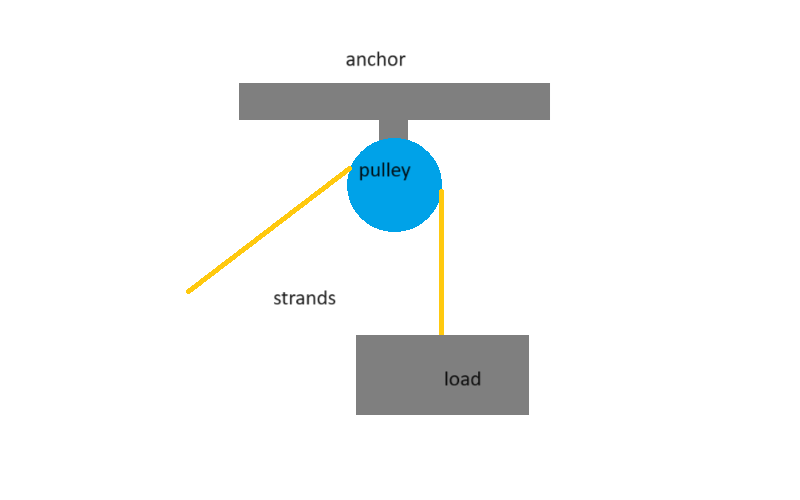
In this system, we do not get any mechanical advantage, so if we have a load that requires an effort of ten newtons, we would have to use ten newtons of force to raise the object.
However, if we add a moving pulley to the load, we will get a mechanical advantage. For example, in this image:
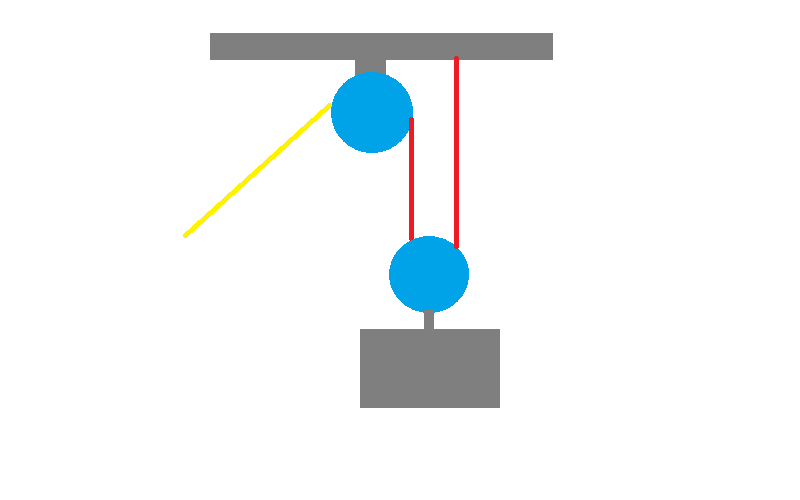
The mechanical advantage is expressed in the number of strands connected to the moveable pulley. In this case, that number is two, so the mechanical advantage is also two.
We can use this formula to find out how much force we need to pull a certain weight:
Where Pf is the pulling force, Rf is the resisting force, and MA is the mechanical advantage.
If the resisting force of the object is 100 newtons, and we have two strands connected to the second pulley, like in the picture, then we get this solution:
We only need 50N of pulling force to raise 100N of resisting force, but we also need twice the length of strand than if we only used one pulley. The more moving pulleys we add, the more strands we attach to them, giving us more mechanical advantage.
Some examples of pulley usage in real life are: timing belts in engines, tower cranes, elevators etc.




